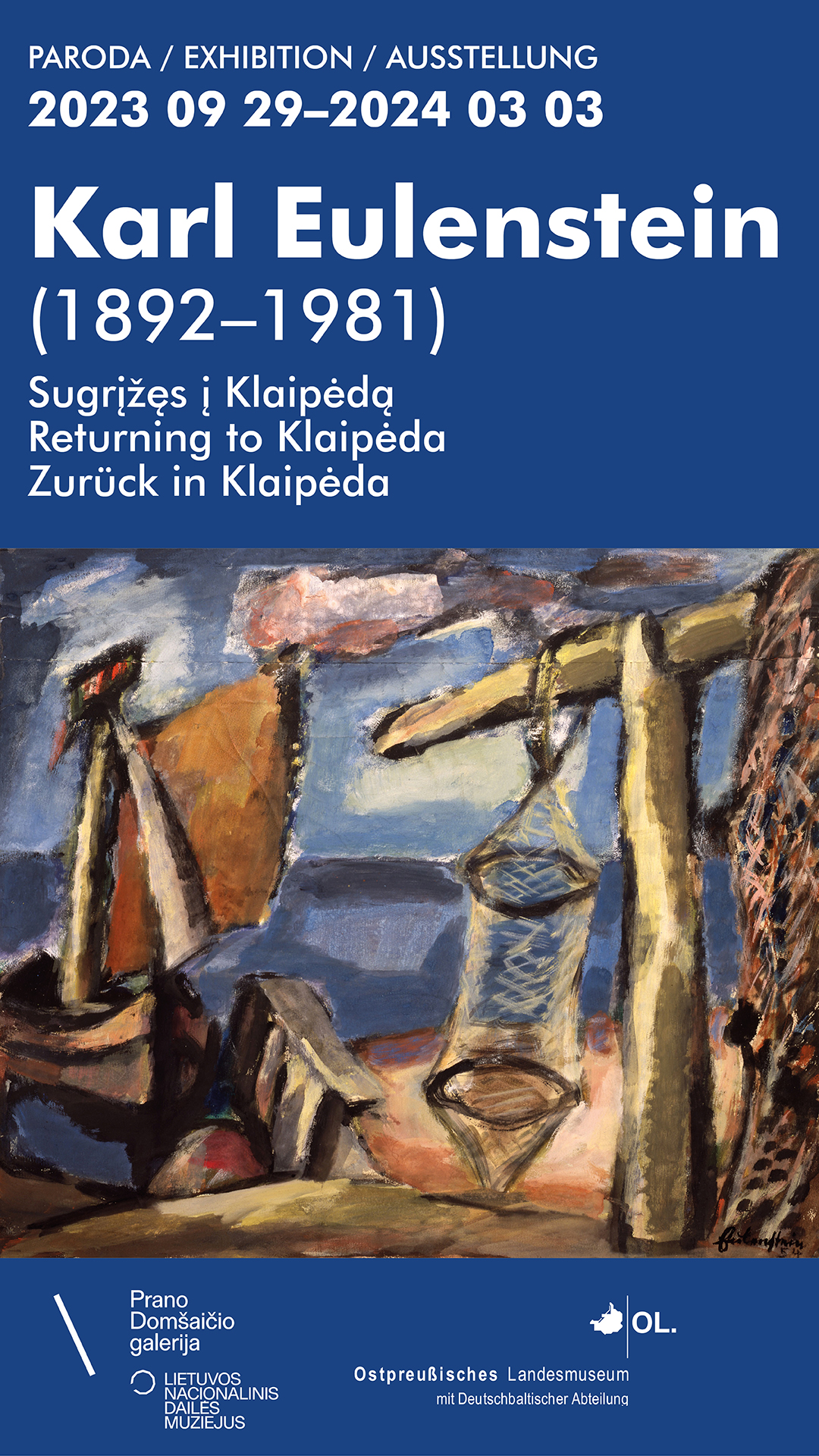Karl Eulenstein (1892–1981). Returning to Klaipėda
 At 5.30 p.m. on Friday, 29 September, Pranas Domšaitis Gallery of the Lithuanian National Museum of Art opens an international exhibition Karl Eulenstein (1892–1981). Returning to Klaipėda. It is the eleventh joint event at the gallery aimed to present and promote the artistic heritage of East Prussia through continued collaboration between The East Prussian Regional Museum (Lüneburg, Germany) and the Lithuanian National Museum of Art.
At 5.30 p.m. on Friday, 29 September, Pranas Domšaitis Gallery of the Lithuanian National Museum of Art opens an international exhibition Karl Eulenstein (1892–1981). Returning to Klaipėda. It is the eleventh joint event at the gallery aimed to present and promote the artistic heritage of East Prussia through continued collaboration between The East Prussian Regional Museum (Lüneburg, Germany) and the Lithuanian National Museum of Art.
The idea to hold an exhibition of Karl Eulenstein’s work was inspired by an important gift of 15 paintings and books illustrated by the artist received by the Lithuanian National Museum of Art. The works were gifted by Ekkehard Hildebrandt, the son of one of the best friends of the artist on 19 May last year.
Karl Eulenstein is one of the most famous artists who came from Klaipėda. He was born 25 August 1892, into a big family of a steamer captain. His German father and Lithuanian mother lived in a suburb of Didžioji Viltė. The artist later recalled his childhood: ‘We lived in Klaipėda, on the shore of the lagoon, so close to water, and my impressions are still vivid and immediate, unforgettable indeed’. In Klaipėda, Karl worked for a merchant’s office. In 1919, he enrolled into the Art Academy of Konigsberg and lived there after graduation before moving to Berlin. He retained links with his birthplace and visited the region of Klaipėda, as a free artist, until the very summer of 1944. As the war was drawing to an end, his workshop and his artwork got burned during the bombing of Berlin. He continued living and working from Berlin until his death.
Eulenstein’s work is dominated by the motifs of the seafront and the nature of lagoon shores, by the views of his native Klaipėda and scenes of simple fishermen’s life.
Dr Jörn Barfod, a co-curator of the joint exhibition and expert on the heritage of East Prussia, thus describes the painter’s work: ‘Eulenstein succeeded in finding a new, independent visual language to depict the Klaipėda region and the ancient motifs. <…> His intense blue, red, yellow, occasionally, tender green or light grey are fascinating, yet the darkness and heaviness of prewar years keeps haunting every piece. The colour black with simpler, but strong contours, occasionally looks almost flat and dominating. The artist was obviously influenced by the art of Emile Nolde and George Rouault. However, his artwork cannot be aligned precisely with one or another movement. Therefore, the terms of “expressionism” or “late expressionism” fit his art only in a special, “eulenstein’s” way.’
Karl Eulenstein (1892–1981). Returning to Klaipėda features paintings from the high-quality collections by the East Prussia Regional Museum and The Lithuanian National Museum of Art. The paintings in tempera and watercolour, an occasional specimen of graphic art represent mostly the artist’s postwar period, when he created memory pictures of his native Klaipėda region.
Exhibition co-curators: Dr Jörn Barfod, Aurelija Malinauskaitė
Exhibition coordinator: Aurelija Malinauskaitė
Designer Loreta Uzdraitė
Exhibition sponsor: Klaipėda City Municipality
33 Liepu st, LT-92145, Klaipėda, Lithuania
+370 46 410 412
domsaicio.galerija@lndm.lt













